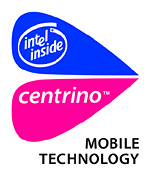
| Home of Wireless Applications |

|
Daily Newsletter
|
 |
CDMA
CDMA Description
CDMA, one of the most important 2G mobile networks in the world, provides
the flexibility to trade off between coverage, capacity, and call quality.
It enables a flexible payload system that easily allows new services
to be added without requiring hardware changes to the BTS. The maximum
number of CDMA subscribers is relative to the system environment, application,
and the trade off in terms of coverage and quality.
Future proof technology
CDMA is future proof, it will provide the capabilities needed to realize
significant advancements in data services. It contains the fundamental
building blocks for continual and sustained evolution and growth. CDMA
is a key enabler for the wireless Internet, m-commerce, multimedia,
and other advanced data services.
In October 2000, Korean operators launched the first commercial 3G networks. Thanks to cdma2000, 3G services are currently available. cdma2000 has made the ITU IMT-2000 vision a reality.
More than thirteen handset models capable of supporting up to 144kbps
have been produced since October 2000. Many more are in development..
Multiple access: a major concept in CDMA
A large number of users share a common pool of radio channels and any
user can gain access to any channel, which allow multiple customers
to be supported at the same time.
CDMA Benefits
Capacity increases of 8 to 10 times that of an AMPS analog system and
4 to 5 times that of a GSM system
Variable rate voice coders reduce the rate being transmitted when the
speaker is not talking, which allows the channel to be packed more efficiently,
resulting in additional capacity.
Power control techniques are used to keep the transmitted power at
the absolute minimum required to support a high call quality.
Less Power = Less Energy = Less Interference = Greater Capacity
Higher capacity per site means that fewer sites need to be deployed
to meet a given traffic demand.
Improved call quality, with better and more consistent sound as compared
to AMPS systems
The voice quality provided is better than the AMPS or TDMA ones.
High quality 13kb voice coder: the TDMA channel structure allows no
more than 8 Kb voice coder and is planned to evolve to a 4 Kb coder.
The CDMA structure uses 13 Kb in the near team providing the best quality.
Soft handoff: TDMA employs a hard handoff when moving between cell
sites, resulting in a noticeable mute on the call. This mute can be
significant in cities where handoffs will occur 2-4 times per minute.
CDMA, on the other hand, uses a technique known as soft handoff to eliminate
this problem. Soft handoff allows the phone to receive signals from
3-5 adjacent cell sites at the same time, and combines the signals to
eliminate the handoff muting as well as improving overall signal quality
(by always selecting the best signal of the 3-5 that are received).
Simplified system planning through the use of the same frequency in
every sector of every cell
Reduction of the number of sites needed to support any given amount
of traffic thus reducing deployment and operating costs
Since a wideband spread spectrum signal is very hard to detect, it appears
as nothing more than a slight rise in the "noise floor" or
interference level.
With other technologies, the power of the signal is concentrated in
a narrower band, which makes it easier to detect.
Increased privacy is inherent to CDMA technology. CDMA phone calls will be secure from the casual eavesdropper since, unlike an analog conversation, a simple radio receiver will not be able to pick individual digital conversations out of the overall RF radiation in a frequency band.
Improved coverage characteristics, allowing for the possibility of
fewer cell sites
The coverage generated by CDMA technology is better than that of AMPS
or TDMA (by 3-6 dB).
Better coverage means better quality and fewer sites required to provide
service outside the major urban centers
Power control
If, rather than using constant power, the transmitters can be controlled
in such a way that the received powers from all users are roughly equal,
then the benefits of spreading are realized.
If the received power is controlled, then the subscribers can occupy
the same spectrum, and the hoped-for benefits of interference averaging
accrue.
Reduced average power transmitted and thus potential health risks and interference to other electronic devices.
Bandwidth on demand
Thanks to variable rate voice coders which reduce the rate being transmitted
when the speaker is not talking. This technique allows the channel to
be packed more efficiently, resulting in additional capacity and allowing
network to manage the Bandwidth.
|
Copyright
2004 © Vovida Research, All rights reserved. |